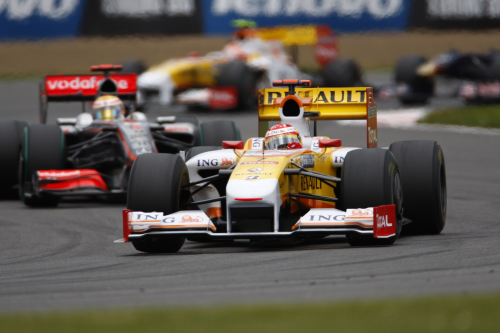
By reducing the development time from 12 weeks to six weeks, the ING Renault Team was able to debut the diffuser two races sooner than would have been possible without the technology.
The diffuser is an extension of the floor at the rear end of the racing car, between the rear wheels, and is used to collect and organise the high-speed air rushing beneath the car. This reduces drag and increases downforce and lateral grip, enhancing both the speed and agility of the car.
F1 teams including both Williams and Toyota had introduced the diffuser in the first two rounds of the 2009 season. However, ambiguity within the rules caused several teams to question the legality of the use of the diffuser under the 2009 regulations. Four teams, including Renault F1 appealed against its use to the Fédération Internationale de l'Automobile (FIA) – an appeal which was denied.
The development of a diffuser – comprised of over 100 plies of carbon fibre – was already underway by the Renault F1 team, and with the ruling allowing the use of the diffuser issued by the FIA, Vistagy's FiberSIM® composite design software helped the team to quickly implement it. External suppliers used the electronic templates generated by FiberSIM, and according to senior engineers at Renault F1 provided the suppliers with significantly improved – and more accurate – manufacturing data than they had previously had.
The Renault F1 Team’s previous experience with ply books suggests that there would normally be some ambiguity with manufacturing data. However the team confidently reports that by using the FiberSIM technology it was able to manufacture the car just as it was designed. The initial 50% savings experienced on the first double diffuser design, was further reduced on the next iteration. The subsequent double diffuser took just three days compared to around nine days for previous developments. This is a critical element to ensuring the team’s performance when a part needs to be produced and shipped between one race and the next – in some cases just six days apart.





